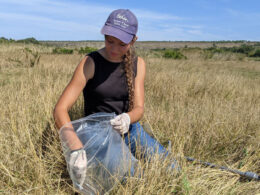In 2017, raion center Zhovkva became the first gas-free city in Ukraine. The European Union funded the project which allowed to fully eliminate gas heating and use wood waste instead.
Zhovkva, a town with 13,500 inhabitants in Lviv region, became the first Ukrainian city to stop using gas. The municipality of Zhovkva initiated the process of transition from gas to solid fuel back in 2005 when natural gas was not that expensive and Russia supplied it without interruption. In 2012, Zhovkva joined the Covenant of Mayors, a European co-operation movement which’s signatories commit to increasing energy efficiency using renewable energy sources on their territories.
There are four municipal boiler houses in Zhovkva. One of them was re-equipped with solid fuel combustion appliances. Instead of combusting gas, it uses wood chips and sawdust now. One more facility is being reconstructed too. Two more gas boiler houses were put on hold on stand-by reserve.
Switching from gas to biomass allowed the community of Zhovkva to save 20% of city budget funds annually. But first, it had to stop the heat loss since up to 80% of the produced energy went into heating the ground. Old Soviet pipes were replaced with new insulated ones. Now the heat losses between a boiler house and residential and municipal buildings being heated dropped to zero.
- Zhovkva was founded in 1594 as a town by the Polish nobleman Stanisław Żółkiewski and was built on an ideal Renaissance city plan.
- In the 17th century, it became the royal residence for King John III Sobieski of Poland
- From its earliest days, the population was a mix of Poles, Ukrainians, and Jews
- Landmark buildings include a fortress-like synagogue, churches, and monasteries
Video by Suspilne Oko.
Read more:
- Revitalized and re-energized: Ukraine’s energy reform success | #UAreforms
- Energy blockade of Crimea raises 5 inconvenient questions, Kazarin says
- Energy Corruption in Ukraine: Causes and Cures
- EU energy plan puts Kaliningrad at risk, Moscow paper says
- The Ukrainian energy sphere’s dependence on Russia
- Chornobyl Exclusion Zone to be Home to Safe Solar Power







